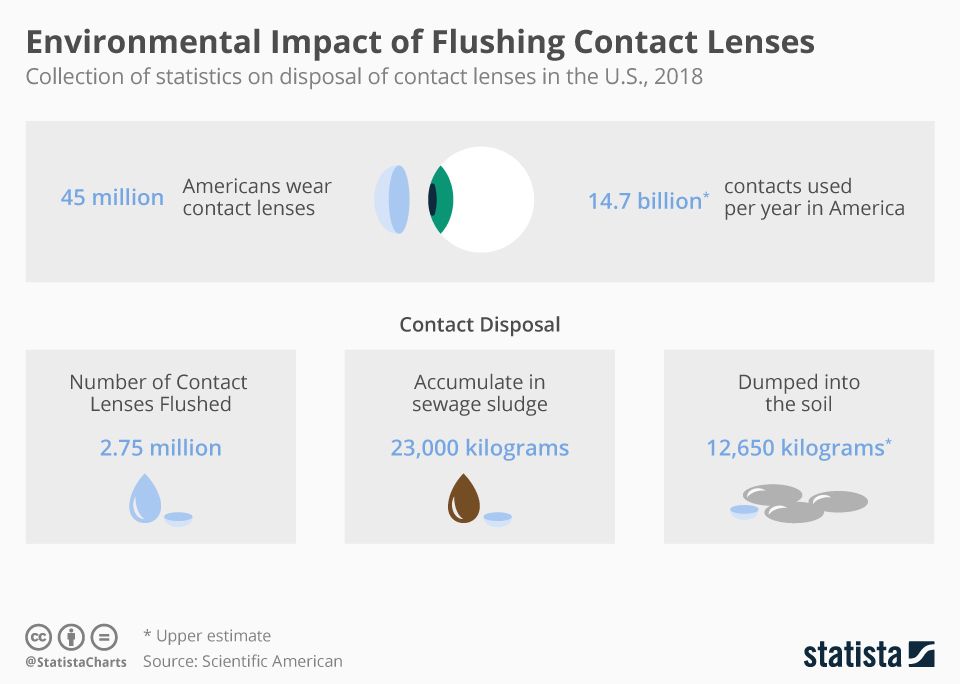Environmental Impact of Flushing Contact Lenses
Waste
Researchers found that the lenses did not effectively break down in lab simulations of water treatment facilities. Around half of treated wastewater—and whatever else is in it—ends up getting dumped into soil after treatment, meaning anywhere from 11,000 to 12,650 kilograms of contact lens fragments end up in U.S. dirt annually. That’s almost twice the weight of a Tyrannosaurus rex.
Contact lens fragments could impact the soil, potentially shattering into smaller pieces where those microplastics could then enter the food chain. Lenses are very absorbent, taking in toxins from the environment, like pesticides and herbicides, posing a hazard for animals that consume them. While the number of contact lenses is staggering, it pales in comparison to the eight million metric tons of larger plastics, like grocery bags and water bottles, that circle the oceans every year. While contacts don't make up a large portion of plastic waste, this type of plastic could be easier to eliminate from the environment.

Description
This chart shows a collection of statistics on the disposal of contact lenses in the U.S. for 2018.




















